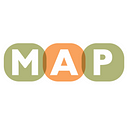EDUCATION & ACTION DURING COVID-19 SERIES
LGBTQ Data Collection
Without large-scale data about LGBTQ people, it is difficult to fully understand the challenges LGBTQ people experience

The public health threat of COVID-19 has shown us now, more than ever, the importance of mutual aid and community care. As part of our commitment to speed equality and opportunity for all, MAP will be publishing a series of posts that advance the conversation around vulnerable communities who may be particularly at risk to the effects of the virus and the economic downturn. In the middle of an unprecedented global pandemic that affects us all, this series will shed light on the particular challenges facing all of our communities, as well as resources from partners and allied organizations to support you through the pandemic.
For months, it has been clear that Black and Latinx people in the United States have been disproportionately diagnosed with, and experienced serious complications and death from, COVID-19. Nationally, early data suggest that 22% of COVID-19 patients are Black despite comprising just 13% of the overall U.S. population. Latinx people account for 18% of the U.S. population, but 32% of COVID-19 patients. Just last week, the Centers for Disease Control and Prevention (CDC) announced they would begin requiring sex, age, race, and ethnicity information for all COVID-19 diagnoses beginning August 1.
Having demographic data is critical during a pandemic to help identify trends in who is impacted and why. That’s why advocates have also been working to ensure that questions about sexual orientation and gender identity are included in the reporting of COVID-19 infections. More than 100 members of Congress wrote to the U.S. Department of Health and Human Services asking the agency to require this data, and multiple states, including California and New Jersey, have legislation pending.
Pennsylvania has led the way in collecting data on LGBTQ people. In mid-May, Pennsylvania governor Tom Wolf announced the state would add sexual orientation and gender identity fields to the COVID-19 data collection system. This information is particularly important given that many LGBTQ people have health disparities, such as higher rates of smoking and lack of regular medical care, that can put them at increased risk for COVID-19. According to the governor’s announcement:
“Pennsylvania’s standards of care — in times of crisis and not — are based on an ethical allocation framework, meaning care is provided equitably across all populations without regard to patient age, race, gender, creed, color, sexual orientation, gender identity or expression, disability, ethnicity, religion, or socioeconomic status.”
The lack of data about LGBTQ people isn’t limited just to COVID-19. In fact, very few federal, nationally representative surveys include questions about sexual orientation and gender identity. The 2020 Census, currently in progress, lacks either question. For decades, researchers have relied on Census data to identify same-sex couples who live together, but that’s a narrow swath of the broader LGBTQ community.
Without large-scale data about LGBTQ people, it is difficult for advocates, policymakers, and researchers to fully understand the challenges they experience.
Surveys such as the Behavioral Risk Factor Surveillance System (BRFSS), conducted by the Centers for Disease Control, have started to ask about sexual orientation and—in more limited instances, gender identity—but these surveys still do not occur nationally. Currently, 18 states do not include sexual orientation and gender identity modules in their state-based BRFSS survey of adults.
What’s more, the Trump Administration released a final rule last month stripping sexual orientation data collection on foster youth, parents, and guardians, as well as information about Native American children, from the nation’s child welfare reporting database. This will undermine the ability not only to track demographic trends but also to identify gaps in services, ultimately placing youth and prospective parents at continued risk of harassment and discrimination.
The lack of LGBTQ inclusive data significantly hinders the ability of advocates and policymakers to press for LGBTQ policy and funding priorities, which creates a cycle that harms LGBTQ people in all areas of life. And while the LGBTQ Data Inclusion Act — which would require all federal agencies to include voluntary SOGI questions in data collection instruments that include demographic data — has been introduced in Congress in years past, the bill has not been revived in the current legislative session. Especially during a pandemic and ensuing economic crisis, municipalities, states, and the federal government should enact laws and policies that require data collection efforts to be fully inclusive of the LGBTQ community and other marginalized groups.
Take Action
- Fill out the 2020 Census. Results from the Census play a vital role in helping federal, state, and local officials plan and evaluate funding for many areas of public life.
- Ask your Congress people to call for the addition of sexual orientation and gender identity questions, such as what would be required by the LGBTQ Data Inclusion Act.


